Frances di Plino's Blog, page 5
July 10, 2014
Ten facts about … J.J. Hensley
When did you first realise you wanted to be a writer?I started writing purely as an experiment. A few years ago, I started wondering if I had the ability to write a novel and, after procrastinating for quite a while, I finally sat down and started typing. Once I got into the flow of things, I discovered that the process was enjoyable and rewarding. Having my first novel, Resolve, receive so much positive feedback made me want to write more stories.
How long does it take you to write a book?
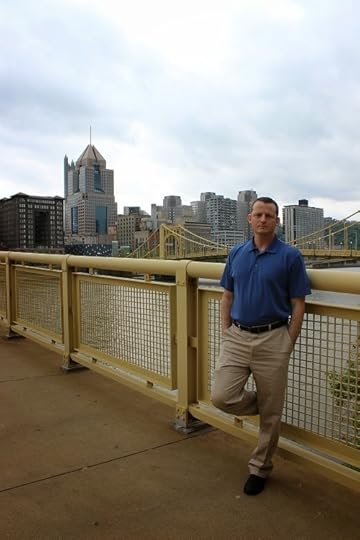 That’s a question with two different answers. Amazingly, it only took me three months to complete the first draft of
Resolve
. However, now I have a daughter so I find it much more difficult to find time to write. Instead of writing most of a chapter in a day, I might write a few paragraphs before it’s time to go play outside or take a trip to the zoo. As the father of a young child, it takes me two or three times longer these days to write a novel, but I wouldn’t want it any other way.
That’s a question with two different answers. Amazingly, it only took me three months to complete the first draft of
Resolve
. However, now I have a daughter so I find it much more difficult to find time to write. Instead of writing most of a chapter in a day, I might write a few paragraphs before it’s time to go play outside or take a trip to the zoo. As the father of a young child, it takes me two or three times longer these days to write a novel, but I wouldn’t want it any other way. What is your work schedule like when you're writing?I have a “real” job, so most of my writing is done after my daughter goes to sleep. I’ve had to learn to be extremely flexible with my writing schedule since 2-year-old children do not seem to have an appreciation for the complexities of the creative process. They tend to want lots of attention and occasionally some food and water. Yeah… they are needy little suckers.
How many crime novels have you written?I’ve written three thus far. Resolve was my first and Measure Twice is scheduled to be released later this year. The third novel is set for 2015 and I’ve completed two-thirds of a fourth book.
Which is your favourite and why?Even with all of the attention that has been given to Resolve , I think Measure Twice speaks to me in a stronger way. It’s a story of loss and redemption wrapped in a fast-paced thriller.
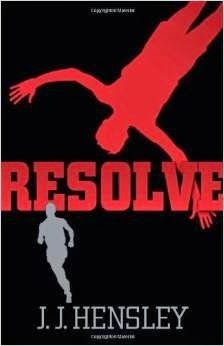 Where do you get your ideas?I’m a former police officer and former Special Agent with the U.S. Secret Service, so I draw a lot of ideas from my training and experience. Sometimes I’ll build off something I’ve seen or heard and see if I can work it into a work of fiction.
Where do you get your ideas?I’m a former police officer and former Special Agent with the U.S. Secret Service, so I draw a lot of ideas from my training and experience. Sometimes I’ll build off something I’ve seen or heard and see if I can work it into a work of fiction. Who is your favourite character from your own work and why?The protagonist in Resolve is a man named Cyprus Keller. He owns a dog named Sigmund. I like Sigmund and Sigmund likes everybody.
Which character from the work of others do you wish you’d invented and why?That’s an easy one. It’s Philip Marlowe from the works of Raymond Chandler. With him you get to write about liquor, women, money, and murder and be a complete smartass along the way.
If you could have been someone from history involved in crime (good or bad) who would that be and why?The crime has been largely forgotten, but in 1876 there was an attempt to steal the body of Abraham Lincoln from a cemetery in Springfield, Illinois. The would be grave-robbers were part of a counterfeiting ring and had aspirations of taking the body holding it for ransom – part of which would be a pardon for an imprisoned engraver named Benjamin Boyd. The attempt was foiled in part by a U.S. Secret Service operative named Patrick D. Tyrrell who had previously led the eight-month manhunt that resulted in Boyd’s imprisonment.
It would be amazing to walk in the shoes of Tyrrell and be tied to such an odd, yet amazing event.
What are you working on now?I’m working on a mystery that I’ve titled Bolt Action Remedy. It involves the murder of a wealthy businessman who is gunned down on his own property by someone who can ski and shoot with great skill. The major problem is, the victim’s property bumps up against a biathlon training camp where everybody can ski and shoot.
J.J. HENSLEY is a former police officer and Special Agent with the U.S. Secret Service who has drawn upon his experiences in law enforcement to write stories full of suspense and insight. Hensley graduated from Penn State University with a B.S. in Administration of Justice and has a M.S. degree in Criminal Justice Administration from Columbia Southern University. The author is currently a training supervisor with the U.S. Office of Personnel Management and lives with his beautiful wife, daughter, and two dogs near Pittsburgh, Pennsylvania.
Mr. Hensley’s novel Resolve was named one of the BEST BOOKS OF 2013 by Suspense Magazine and was named a finalist for Best First Novel by the International Thriller Writers organization.
He is a member of the International Thriller Writers.Email: contact.hensleybooks@gmail.com
Links:http://hensleybooks.wordpress.com/www.amazon.com/author/hensleybooksFacebook: www.facebook.com/hensleybooksTwitter: @JJHensleyauthorGoodreads: http://www.goodreads.com/JJHensley
Works:ResolveVehemence – Kindle ExclusiveMeasure Twice – Coming Soon!
Published on July 10, 2014 07:27
July 6, 2014
Review of Brass in Pocket
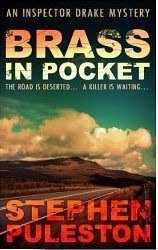 Brass in Pocket
, the first in Stephen Puleston’s Inspector Drake series set in North Wales, opens from the killer’s point of view – something I do myself, so loved the fact that here was another crime writer getting inside the head of the criminal.
Brass in Pocket
, the first in Stephen Puleston’s Inspector Drake series set in North Wales, opens from the killer’s point of view – something I do myself, so loved the fact that here was another crime writer getting inside the head of the criminal. The story opens as the killer recounts the setup leading to the murder of two policemen on a deserted country road – they are later discovered shot, but not by bullets and not from a gun. One is still in the driver’s seat and the other is leaning against the car. Set out in traffic cones near the scene is a number four.
When he gets to the police station, Drake discovers a photograph with song lyrics on the back.
As more deaths come to light, so do various suspects, building the tension and deepening the mystery. Nearing the end of the book, I guessed who the culprit was, but hadn’t fully worked out why, so that came as a satisfying surprise. The central character, Ian Drake, is an obsessive compulsive, a nice character development, although as he agrees to see someone about it, this does appear as if it might be dealt with as the series progresses. I hope he doesn’t get completely cured, as I found him to be so intelligent and likable, he needs character flaws to balance his personality.
Although the denouement seemed to come out of the blue, I realised on reflection that all the clues were there for me to find – the mark of a well-constructed crime novel.
I’m really looking forward to reading the next in this series.
Published on July 06, 2014 01:47
July 3, 2014
Ten facts about … M. G. Scarsbrook
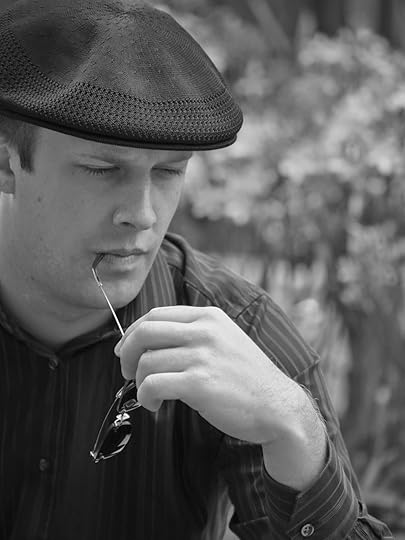 When did you first realise you wanted to be a writer?From childhood – I was always writing stories for myself or bringing them to school for teachers to read aloud to my class.
When did you first realise you wanted to be a writer?From childhood – I was always writing stories for myself or bringing them to school for teachers to read aloud to my class.How long does it take you to write a book?In the past I’ve written the first draft of a novel in about three months, with lots of rewriting and editing to follow. But my last novel took over two years in total – I tend to work slowly now, making sure every sentence and scene are as good as possible before moving on to the next one.
What is your work schedule like when you're writing?Sometimes I write all day, ranging from about 9:30am till around 7pm. But I generally like to split the day between reading / research, usually done in the morning, and then writing in the afternoon.
How many crime novels have you written?One. Although I’m planning a series and have already started working on the next instalment.
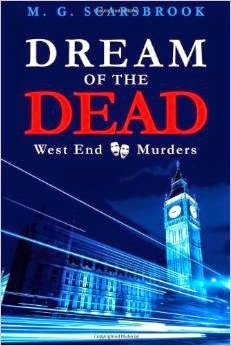 Which is your favourite and why?My last novel,
Dream of the Dead
, is my favourite so far. My previous novels were both historical, and I found the past sometimes quite limiting as a writer. In contrast, Dream of the Dead allowed me to use a more interesting vocabulary, gave me full control over the narrative of my story, and permitted me to engage with contemporary issues in a way that historical fiction, by its very nature, cannot do.
Which is your favourite and why?My last novel,
Dream of the Dead
, is my favourite so far. My previous novels were both historical, and I found the past sometimes quite limiting as a writer. In contrast, Dream of the Dead allowed me to use a more interesting vocabulary, gave me full control over the narrative of my story, and permitted me to engage with contemporary issues in a way that historical fiction, by its very nature, cannot do.Where do you get your ideas?I typically base all my stories on research, including historical events/people, recent headline news, or academic studies. The real world is so interesting that it always provides plenty of story material. I like to feel that my writing has a solid connection to reality and the kind of events and characters that exist in the world today.
Who is your favourite character from your own work and why?A hard question! I always invest my characters with a lot of care and attention, so it’s difficult to choose. However, I do like my detective Jack Ravenshaw from Dream of the Dead – his wit, imagination, and the theatre environment in which he exists, is very appealing to me.
Which character from the work of others do you wish you’d invented and why?Hamlet – for his intelligence, word play, philosophy, and madness. Such a compelling character. My detective in Dream of the Dead is directly inspired by him.
If you could have been someone from history involved in crime (good or bad) who would that be and why?I admire anyone who challenges the abuse of power, especially when doing so entails great personal consequences and sacrifice. Thomas Paine, who was convicted of sedition (in England), has long been someone I’ve admired.
What are you working on now?I’m currently writing a play as well as working on the plan for my next novel in the West End Murders series.
BIO:M. G. Scarsbrook is the author of three novels and the editor of four literary collections. Since 2011 his books have sold more than 30,000 copies worldwide and been translated into five languages. English editions of his work are sold in paperback, eBook, and audiobook formats at all major online bookstores. A member of the prestigious Crime Writers’ Association and the Society of Authors, he lives in the UK and is working on the next book in the West End Murders series.
LINKS:Website Facebook Goodreads Amazon Author Page
BOOKS:Dream of the Dead: West End Murders, Book 1 Poison In The Blood: The Memoirs of Lucrezia Borgia The Marlowe Conspiracy
Published on July 03, 2014 02:24
July 2, 2014
Shark or bait?
Derrick Walden, swimming coach at the newly renovated Bradchester Youth Centre, likes to keep an eye on who is doing what, where and with whom. His habit of sticking his nose in where it has no place to be could lead him into very dangerous waters, but is he a shark looking for another victim or bait for a deranged mind?
A passionate Chelsea supporter and keep fit fanatic, he has secrets of his own that he wants to keep hidden, not least what drove him out of London to settle in Bradchester. He appears to know people in high places, but is he a friend or foe?
That’s just one of the puzzles Paolo has to solve in Looking for a Reason , the next in the D.I. Paolo Storey series, due out in October 2014.
Published on July 02, 2014 09:35
June 29, 2014
Review of The Keeper
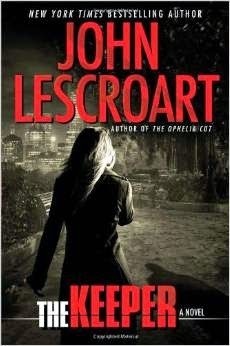 I am an avid John Lescroart fan, but was slightly disappointed by The Keeper. Had I not read every book in the Dismas Hardy series, perhaps I would have found this one more compelling, but the excellence of the earlier novels puts this into the shade by some considerable margin.
I am an avid John Lescroart fan, but was slightly disappointed by The Keeper. Had I not read every book in the Dismas Hardy series, perhaps I would have found this one more compelling, but the excellence of the earlier novels puts this into the shade by some considerable margin.Two of my favourite characters, Dismas and Abe Glitsky, find themselves on the same side of the law for once. Maybe that’s the issue – Abe working for the defence just didn’t quite sit right for me.
As always with Lescroart, the plot looks simple on the surface, but becomes more complicated and complex as the storyline progresses. The Keeper opens with Hardy and his wife of many years discussing the disappearance of Katie Chase, a client Frannie Hardy has been counselling for marital issues. The main suspect is, of course, the husband, Hal Chase, a prison officer for the San Francisco county jail.
As more and more suspects (and dead bodies) turn up, The Keeper morphs into a police procedural, rather than the courtroom dramas one would expect with Lescroart.
Politics rears its ugly head and the resolution of that aspect left me feeling dissatisfied. All in all, not the best of Lescroart’s work, but still far above the average crime/thriller out there.
Published on June 29, 2014 13:01
June 26, 2014
Why I Wrote ...
This week, in place of our usual interview, I am delighted to introduce a guest post from an award winning author, Marshall Stein. Marshall shares with us his reasons for writing his acclaimed crime novel, Rage Begets Murder.
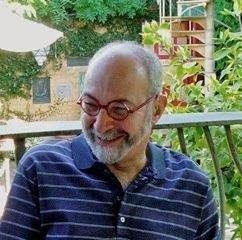 One of the great pleasures of many classic crime thrillers is the portrayal of the underbelly of a society. Raymond Chandler in The Big Sleep exploring the dark reality in the old money Sternwood family. John LeCarre revealing the callous sacrifice of innocents in the The Spy Who Came in From the Cold. Martin Cruz Smith etching in acid the corruption of modern Russia in Gorky Park.
One of the great pleasures of many classic crime thrillers is the portrayal of the underbelly of a society. Raymond Chandler in The Big Sleep exploring the dark reality in the old money Sternwood family. John LeCarre revealing the callous sacrifice of innocents in the The Spy Who Came in From the Cold. Martin Cruz Smith etching in acid the corruption of modern Russia in Gorky Park.Rage Begets Murder takes place in Philadelphia during the birth of the American Bandstand era. I was in high school during the 1950s in a prosperous suburb of Philadelphia. It was a white Republican world. When I registered to vote, it was a very short line for Democrats, and my registration card was pink. There were few people of color in my high school. The first time I remembered being in a social setting where whites and blacks were equally visible was a jazz bar where Miles Davis performed that night.
Bandstand came to television during this time. It was riveting: the music, the dancing. Teenagers could not wait to get home and turn it on. Their contemporaries who danced on the show were so wholesome in appearance: white, usually Italian or Irish American, mostly from Catholic parochial schools. The only people of color on the show were the singers, e.g. Little Richard Penniman, Fats Domino, etc.
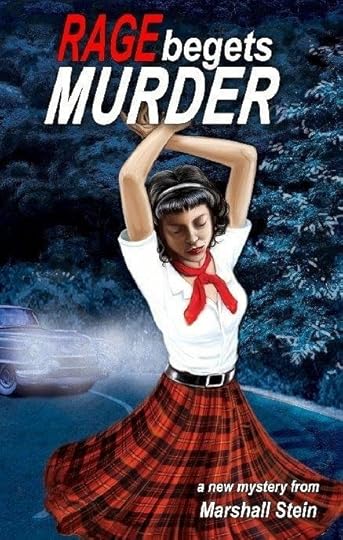 The man who launched Bandstand, Bob Horn, was accused by a dancer on the show of having a sexual relationship with her from the time she was 13 until she was 15. At the time Horn was in his 40s, married, with children. It was a huge scandal in the area known as the Delaware Valley: portions of eastern Pennsylvania, New Jersey and Delaware. I thought this would be a good story for launching a novel.
The man who launched Bandstand, Bob Horn, was accused by a dancer on the show of having a sexual relationship with her from the time she was 13 until she was 15. At the time Horn was in his 40s, married, with children. It was a huge scandal in the area known as the Delaware Valley: portions of eastern Pennsylvania, New Jersey and Delaware. I thought this would be a good story for launching a novel.I have chafed under the myth that everything was perfect in the 1950s: that everyone prospered, that there was little crime, that all races and religions lived in Happy Valley, in short, a world that looked like a Disney cartoon. To the contrary, it was a world of deep racism; a world where people lived in tribes of people like themselves; a world where Ivy League universities set quotas for admitting minorities And a world where violence erupted. This inspired me to write my debut novel in a form I loved, a crime thriller, a genre where dark realities can be explored.
I brought to the book thirty-eight years of trial and appellate experience. Early on, I was an Assistant United States Attorney and then the Chief Staff Attorney for the U.S. Court of Appeals for the First Circuit [Massachusetts, New Hampshire, Maine and Rhode Island]. In government service and in private practice I met people from all sides of the street. The character of Chumsky in RBM, the businessman/organized crime kingpin, was inspired by a real person, a man who died many years ago. Not surprisingly some of the novel is set in a law firm.
RAGE BEGETS MURDER has been called “an author’s tour-de-force” [Jeremiah Healy, Shamus award winner and Past President of International Association of Crime Writers]. “Rage is a stunning example of psychoanalytic character examination and superb story weaving on the part of a very disciplined writer.” [Heater, a noir zine].
Last December I was one of 44 authors at Mystery Night, a group that included Joseph Finder, William Landay, Linda Barnes, Sarah Smith, Hank Phillipi Ryan and Hallie Ephron. I will be a panelist at NoirCon in Philadelphia the end of October. Though retired from the practice of law, I was among 25 lawyers who were invited for a private reception with U.S. Supreme Court Justices Ginsburg and Alito a few weeks ago.
In 2013 RBM was the #1 bestseller for my publisher Post Mortem Press in bookstores, and PMP’s #5 on Amazon in the U.S. It is now available on Amazon UK.
Published on June 26, 2014 03:40
June 23, 2014
Fragments of Crime Left Behind
I was doing some research online the other day into how long it would take a healthy teenager to starve to death (for a future D.I. Paolo Storey novel, I hasten to add – no teenagers were harmed in the production of this post).
While surfing the web on the subject, I was appalled at the auto fill options that came up, showing the weird (and frightening) things people search the internet for. I found myself praying that they were all, like me, simply researching for a novel, or maybe for a thesis on crime.
I then had to find out how long it would take to starve the same poor teenager if he had also been subjected to physical abuse. (I know, I’m a horrible person!) The auto fill suggestions that came up for that particular search will give me nightmares for weeks to come. There are some seriously depraved minds out there!
But these searches made me stop and think about other things I’ve needed to find out for my novels. If I had to put my computer in for repairs, what would the repairman make of my web history?
I’ve researched child abuse and people trafficking, not to mention the extensive searches I’ve done on how to kill people and get away with it. My internet history reads like an encyclopaedia of depravity. I have looked into building secret dungeons, what torture instruments are freely available, how to kill with bare hands, what degree of torture people can survive, and how to soundproof rooms.
What if the aforementioned repairman decided I was a menace to society and reported me to the local police? I live in Spain. My Spanish is coming along, but how on earth would I convince the officers of my innocence when the only things I can say in Spanish and be certain of being understood are: “Where is the nearest train station?” and “I would like to book a table for two people for this evening.”
Deciding I should clean up my computer before being hauled off to prison, I ran an online search to find a programme that would eradicate all traces of my browsing history. Needless to say, I once again got side-tracked by the auto fill options that came up. In no time at all, I was on forums devoted to making sure the police couldn’t retrieve data that had been wiped.
Did you know that, even after reformatting, the police have wunderkinds who can reassemble your browsing history from the tiny, weeny, itsy-bitsy fragments left behind? No, neither did I, but by the time I found out, I was beyond fear of being unable to explain my actions in English, never mind in Spanish, and had moved into full-blown paranoia. Not only did I have the history of all those dreadful searches, but I had now added to my possible crimes by showing that I had searched for ways to cover up the earlier online activity.
In a panic, I called my daughter and explained to her my concerns and what I intended to do to make sure I stayed out of a Spanish gaol. “The best thing,” I said, “is to buy a new computer and keep this one just for online searches. That way, when it breaks down, I can just take a hammer to it and scatter the fragments in the local tip.”
I’d expected at the very least a murmur of approval for what I thought was a brilliant plan, but only silence greeted my words. After a short pause, I heard her laughing and then, ignoring me completely, she called out to her partner, “You’ll never guess what my looney mother has come up with this time!”
After she’d related my sad tale to Karl, she came back on the line. “I’m so pleased you use a pen name,” she said. “I won’t have to tell anyone the madwoman locked away in prison is anything to do with me. Don’t worry, Mum, I’ll send you a cake with a file in it. I’m quite sure, with your vivid imagination, you’ll find a way to break free.”
Hmm, good point. Turning to the computer, I typed: escaping from a Spanish prison
A version of this post previously appeared in my Writing Magazine column (as Lorraine Mace): Notes from the Margin
Published on June 23, 2014 22:32
June 22, 2014
Review of Mission to Murder
Mission to Murder (A Tourist Trap Mystery) is the second in a cosy crime series by Lynn Cahoon. In it we meet for the second time Jill Gardner, the proprietor of South Cove’s much loved establishment: Coffee, Books, and More. Much of the novel is taken up with trying to establish whether or not the old stone wall in the garden of Jill’s home might be part of a centuries-old mission worthy of being declared a landmark and so receive funding for its preservation.
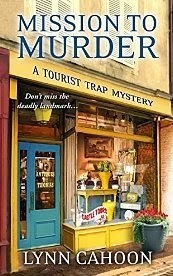 Her claim is contested by Craig Morgan, owner of South Cove’s most popular tourist spot, The Castle. This leads to numerous public confrontations between Jill and Morgan. When Morgan is later found murdered at The Castle, Jill becomes a suspect and vows to clear her name. This aspect of the novel I everyone elsewould see her as suspect number one! It all felt a little contrived, to say the least.found to be weak as it would be highly unlikely (given the circumstance outlined) that anyone would believe she would carry out the dreaded deed, but everyone appears to think
Her claim is contested by Craig Morgan, owner of South Cove’s most popular tourist spot, The Castle. This leads to numerous public confrontations between Jill and Morgan. When Morgan is later found murdered at The Castle, Jill becomes a suspect and vows to clear her name. This aspect of the novel I everyone elsewould see her as suspect number one! It all felt a little contrived, to say the least.found to be weak as it would be highly unlikely (given the circumstance outlined) that anyone would believe she would carry out the dreaded deed, but everyone appears to think
I also found the constant references to what had happened in the first in the series off-putting. Instead of making me want to search out and read number one, I felt as if I knew who’d committed the crime and why, so had no need to do so.
These two negatives aside, Lyn Cahoon has created a likeable heroine and brought to life a small coastal town so credibly that I wouldn’t be at all surprised to find it did, in fact, exist. Characterisation and setting are both excellent, but, for me, the plot needed to have been stronger.
A light, easy to read, cosy mystery – perfect for the beach or poolside.
I received an ARC of Mission to Murder via NetGalley in exchange for an honest review.
 Her claim is contested by Craig Morgan, owner of South Cove’s most popular tourist spot, The Castle. This leads to numerous public confrontations between Jill and Morgan. When Morgan is later found murdered at The Castle, Jill becomes a suspect and vows to clear her name. This aspect of the novel I everyone elsewould see her as suspect number one! It all felt a little contrived, to say the least.found to be weak as it would be highly unlikely (given the circumstance outlined) that anyone would believe she would carry out the dreaded deed, but everyone appears to think
Her claim is contested by Craig Morgan, owner of South Cove’s most popular tourist spot, The Castle. This leads to numerous public confrontations between Jill and Morgan. When Morgan is later found murdered at The Castle, Jill becomes a suspect and vows to clear her name. This aspect of the novel I everyone elsewould see her as suspect number one! It all felt a little contrived, to say the least.found to be weak as it would be highly unlikely (given the circumstance outlined) that anyone would believe she would carry out the dreaded deed, but everyone appears to think I also found the constant references to what had happened in the first in the series off-putting. Instead of making me want to search out and read number one, I felt as if I knew who’d committed the crime and why, so had no need to do so.
These two negatives aside, Lyn Cahoon has created a likeable heroine and brought to life a small coastal town so credibly that I wouldn’t be at all surprised to find it did, in fact, exist. Characterisation and setting are both excellent, but, for me, the plot needed to have been stronger.
A light, easy to read, cosy mystery – perfect for the beach or poolside.
I received an ARC of Mission to Murder via NetGalley in exchange for an honest review.
Published on June 22, 2014 04:44
June 19, 2014
An Expert Eye
An Expert Eye by guest blogger Gillian Hamer
A thoughtful reviewer wrote this recently about my latest crime novel release, Crimson Shore:
[image error] “Crime novels are harder to write than they are to read. The author must hold back, keep a twist for the tail without letting too much away but without leaving the outcome too far-fetched or disappointing. The ending has to satisfy. Not only that, but these days a crime author must remain au fait with the latest technology and the latest crime-fighting wizardry of the forensic pathologist. Whilst doing all this, the author needs to characterise perfectly - a flawed detective, a bent copper, an old crime that's festered in the background for decades or some kind of psychopathic adversary, but above all these characters need to be perfectly weighted - often over the course of several books.”
Sage words. And I agree with pretty much every one of them. Crime writing is incredibly difficult for a multitude of reasons, of which just a few have been mentioned above. No genre of writing is easy, of course. With so many plates spinning at any one time, it’s always a tense balancing act. But with crime fiction, spinning plates is only a side skill. As writers, we are often urged to develop techniques like POV (point of view) by getting inside our characters’ heads or knowing them so well we are under their skin. But when, as a crime writer, one of your lead protagonists is a serial rapist or multiple murderer – how exactly do you put the fact into fiction?Research, research, and more research is the answer.
Towards the top of the list of difficulties of writing in this genre for me is authenticity. The easiest way, in my mind at least, of spoiling a crime novel, and losing the reader, is a lack of believability. And sad to say, as a reader, I’ve faced this dilemma on quite a few occasions. Getting it right, whatever the ‘it’ may be, is vital. And the ‘it’ in this genre can be wide and varied. It can be setting the right atmosphere of tension and intrigue. It can be getting inside the mind of a twisted killer or the victim of a vicious attack. It can be correct representation of police procedurals, or detailed knowledge of a complex subject such as pathology or forensics.
And that is my chosen topic for this blog post.
Personally as a writer, I find both the ‘baddie’ scenes and the ‘detective’ scenes relatively easy to write. The voices come to me quite early on in the process, and the characters develop as I proceed. I read a lot of crime and watch a lot of television detective dramas, so procedural doesn’t present too many problems and is relatively easy to research. But in a couple of my books, I’ve relied heavily of pathology and forensic procedures, a topic that has long fascinated me. Reading books has never really been enough for me, unless I take reams of notes I then rarely look through, I don’t seem to be able to absorb the information. I think it may be because I am a visual writer, so I need to interact more for research to sink in. So, three years ago, I enrolled on an entry level Forensics Science course, with the Open University. I’m proud to say I managed to pass although it was a hard years’ work, and I found a lot of the science-based chapters a tough challenge.
The research material supplied on the course is an invaluable asset to me even now, and for that reason alone, I’d recommend taking the plunge in something similar if you get an opportunity. The course work started with basic police procedurals such as crime scene investigation, fingerprint analysis, examination of blood and bodily fluids which then led into the more complex world of DNA profiling. One of the chapters I have recently re-researched for my current WIP is forensic toxicology and drug abuse. I learned so much about toxicity and the analysis of drugs and poisons that I know I can write with confidence when my detective characters face these issues in the course of their investigation.
The most interesting subject I studied was forensic science and the legal system. The role of forensic science in a court of law is an interesting and ever-changing spectrum. With new technology and profiling techniques appearing year on year, UK legislation is constantly changing and adapting to take up the benefits of new developments. As a writer, keeping abreast of these changes is vital to keep your work authentic.
But despite all of the incredible new options that forensic science and pathology offer to the police and legal services, I was also amazed at just how hard and time-consuming it was to ensure the accuracy of the data collated. And the statistics for times when the evidence did prove unreliable due to contamination or foul-play was quite staggering.
Many crime novels would have you believe that DNA is the saviour of policing. And yes, DNA analysis is a robust technique based on sound scientific principles that has revolutionised both policing and the legal system. But DNA profiling is not 100% accurate and can fall foul of human error with disastrous consequences. Example: For sixteen years, German police chased an elusive female serial killer known as ‘the Phantom of Heilbronn’, as the same female DNA was found at 40 crime scenes, including six murders. It was eventually discovered that the cotton swabs used to collect the samples of DNA had been contaminated by a woman working at the factory making the swabs, and that the crimes were not linked. If you want to find out more about this case, have a look at ‘DNA bungle’ haunts German police via BBC News.
It seems to me that not even the most up-to-date technology can ever be foolproof and that back-to-basics policing is still always required.
So, this month I have made a move away from the science-based procedure and have enrolled on a second OU course, this time examining the human brain in terms evidence. The course is titled “Forensic psychology: witness investigation. Discover how psychology can help obtain evidence from witnesses in police investigations and prevent miscarriages of justices.”
I’ve only just started the course, but I already know it’s going to be hugely beneficial to my writing, not only by re-hashing much of what I learn into my detective team by choosing a character to undertake a similar course, but also my adding another layer of authenticity to my writing.
Increasingly in many crime novels and TV dramas, we see a talented team of scientists rely on bloods and amino acids to catch murderers. Many more authors now focus on the use of forensic analysis of physical evidence to solve cases and identify killers. And yet, in the real world, understanding how the human mind works, particularly how our memory works, is a crucial part of any police investigation.
The human element of any story, particularly the evidence provided by victims/witness remains a compelling component. In real life, cases are rarely straightforward because of human intervention and for many reasons there is more likely than not considerable uncertainty as to whether the person accused of the crime actually did it – and with any shred of ‘reasonable doubt’ in place in a courtroom, a conviction is always unlikely. Knowing how to evaluate evidence and how to improve eye-witness reports can be the key to solving the crime and seeing justice achieved.
As the numbers of miscarriages of justice due to a breakdown in physical evidence evaluation continues to rise, so does the interaction between the legal profession and forensic psychology. A number of different terms have been adopted to describe its application to law, including ‘legal psychology’ and ‘criminal psychology’. The applications are becoming more and more wide-spread and are something crime writers should focus at least partly on in their own fictional cases as it offers huge scope. There is the work of psychologists who are concerned with the treatment and rehabilitation of offenders, and offender profiling. Additionally, there is research, often conducted in the laboratory, that examines witness testimony, juror decision making and public perceptions and attitudes towards crime and punishments.
My latest OU course focuses on just one element of forensic psychology - witness testimony. The need for correct police handing of the human link in the chain of events of vital. The stats where things go wrong are staggering, with eyewitness misidentification remaining the leading cause of wrongful convictions, featuring in over 75% of cases. This analysis also showed that forensic science featured in 23% of the wrongful convictions. It is common for crime dramas to portray forensic science as being completely accurate and reliable, but often the techniques they show owe more to science fiction than they do science fact. In reality, the accuracy and reliability of forensic science varies greatly according to the particular technique in question. In addition, a great deal of forensic science is reliant on the interpretation and judgements made by a human expert, which can lead to mistakes being made.
From a writers’ perspective, not only does this research and knowledge add another string to my bow and assist character development, but also it takes me one step closer to a real-life laboratory, crime scene investigation, or police incident room. I have always believed it is vital for a crime writer to burrow as deeply as they possibly can in their research so it becomes almost second nature. And no, we obviously can’t go out and practise our murderers on the public, but we can give ourselves a solid factual base in terms of crime-solving. Not only does this tick the all-important authenticity box, but it’s a great deal more fun – and a whole lot more realistic for the reader – than relying on a Google search or Wikipedia as sole source of our research.
[image error]
Gillian Hamer is author to Crimson Shore and three previous novels, The Charter, Closure and Complicit.
More information can be found at her website www.gillianhamer.com or you can keep up to date with her on Twitter @Gillyhamer.
Published on June 19, 2014 01:36
June 17, 2014
Win some, lose some
I had the most amazing time at the People’s Book Prize (even though Bad Moon Rising didn’t win). The award dinner was held in a fabulous guild hall dating back to the days before printing had been invented! Within the hallowed walls where the folio of William Shakespeare is housed, we sat down to a wonderful meal with excellent company. The colours shining from the stained glass windows added to the sense of being part of something special. Who could ask for more? Apart from winning the prize, of course.
Actually, as far as prizes go, at the dinner I received something almost as good as winning. A scriptwriter asked permission to work on Bad Moon Rising to submit as a six-parter for television. In this industry, it’s all about the highs and lows. If nothing comes of it, I know I’ll experience a low point, but right now, I’m floating on a high!
Speaking of highs, there is nothing better than getting emails from readers saying they have enjoyed the D.I Paolo Storey series so far and asking when the fourth book will be out. As I mentioned in an earlier post, Looking for a Reason will be published by Crooked Cat Publishing later this year.
So that you don't miss out, why not subscribe to the newsletter (link below) and get to hear about the exact launch date before anyone else?
Published on June 17, 2014 07:53



